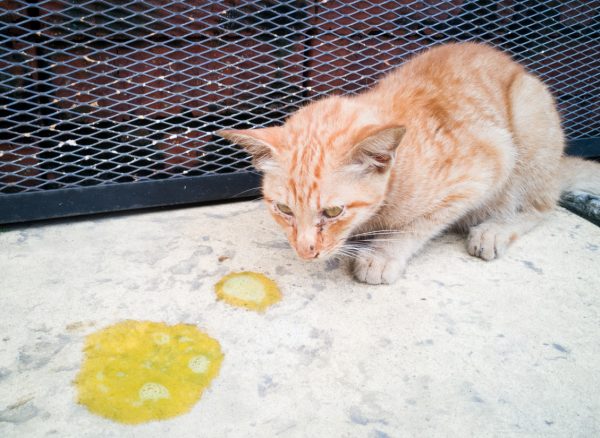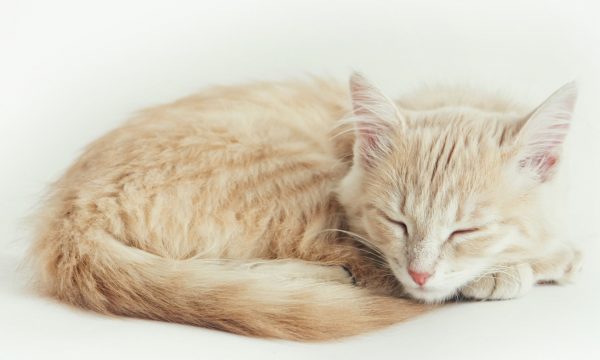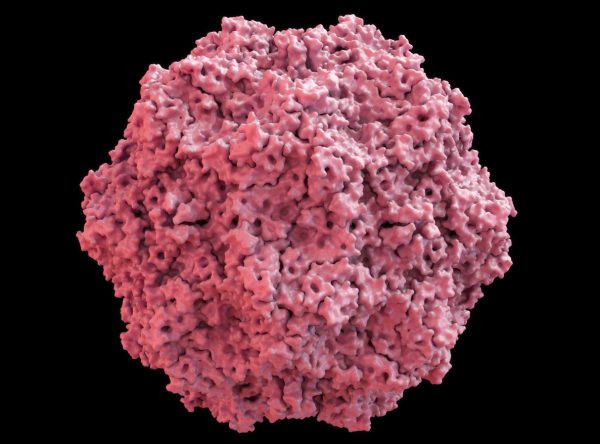What is Feline Panleukopenia?
For unvaccinated kittens under the age of 5 months old, the feline panleukopenia virus (FPV) remains a looming, potentially deadly reality for many of them. Feline panleukopenia is an incredibly contagious virus that can spread from kitten to kitten, especially in kennel or shelter settings. This virus also goes by the names of feline parvovirus and distemper.
The panleukopenia definition refers to how the virus infiltrates the white blood cells contained within the body and essentially makes them useless. This results in a very sick cat with a weakened immune system. Because of the diminished strength of the immune system, the body becomes much more likely to contract additional diseases and viruses, such as the feline immunodeficiency virus.
Because of the seriousness of feline panleukopenia, it is imperative that a cat showing the signs of the virus be taken immediately to see a vet. Cats that are pregnant or unvaccinated can easily contract this virus through exposure to it.

Feline Panleukopenia Symptoms
The common signs associated with feline panleukopenia are:
- Diarrhea and vomiting
- Weakness
- Significant weight loss
- Anemia
- Fluctuating appetite
- Decrease in normal activity levels or depression
How Do Cats Get Feline Panleukopenia?
In nearly every case of feline parvo, a cat is infected through some sort of contact with an infected animal or environment where the FPV virus is concentrated. Exposure to stool from infected animals is a known way for a cat to contract the feline panleukopenia virus.
Distemper is a resilient virus that can withstand extreme temperatures, both hot and cold. It can live on surfaces like shoes, tables, or vegetation for extended life cycles of up to a year. Bleach is the only known substance that can eradicate the FPV virus from a surface.
Once a cat has been exposed to parvo, there is an incubation period between the time of exposure and when symptoms begin to show up. A normal incubation period can be 5 days or less. Once symptoms are noticed, the cat’s life is at stake, and treatment by a certified vet is immediately required. For many felines with the FPV virus, the mortality rate can be as high as 90%. This makes feline panleukopenia the deadliest health condition in unvaccinated kittens.

Can an Indoor Cat Get Distemper?
Any cat, whether it lives indoors or outdoors, can be exposed to feline panleukopenia. Although it is true that outdoor cats have a greater chance of stumbling upon the virus in infected animals, indoor cats are also susceptible. The bottom of a shoe or clothing may have remnants of the virus on it, and this may be all it takes for the indoor cat to get parvo.
For this reason, both indoor and outdoor cats should receive vaccinations for feline panleukopenia. Although the indoor cat may have a longer life given its access to health care and less contact with the physical and viral dangers that can exist outside, it should still be vaccinated against parvo.
Prevention
When it comes to preventing parvo, one of the essential means is through a feline panleukopenia vaccine schedule. In normal circumstances, the average kitten is vaccinated between the ages of 6 and 8 weeks old. These vaccines continue routinely up until about 16 weeks old, or whenever it deemed appropriate by a vet. Until the kitten has been fully vaccinated, contraction of feline distemper is always a possibility.
It is imperative that owners remain aware and alert to this reality. Once all vaccinations have been received, owners can rest assured that the chances of their cat catching feline parvo is very low. If, by some very small chance, the cat does get feline parvo and survives, it will be immune to it for the rest of its life. In other cases, when the kitten is still nursing, it may receive antibodies from its mother’s milk. This can only happen if the mother has previously been vaccinated against distemper. No matter what, an indoor cat and an outdoor cat both contract the feline parvovirus and should be vaccinated accordingly.

Can a Vaccinated Cat Get Distemper?
The short answer is yes, vaccinated cats can get distemper. However, it is very unlikely they will get the virus after the vaccine schedule is received in full.
In spite of a cat being fully vaccinated, cat owners should still make concerted efforts to protect their cat from unfamiliar or potentially infected surroundings. This includes parks, kennels, shelters, or any place where a large group of cats or animals usually spend time. Places such as these should be avoided as much as possible by kittens or adult cats that are unvaccinated.
It is important to keep in mind that, given the resolute nature of feline panleukopenia, it can exist on practically any substance or surface for as long as a year and has the potential to infect animals, vaccinated and unvaccinated, that come into contact with it.
In summary, cat owners should strive to be vigilant in observing their sweet cat and ensure its safety. If any concerns or questions arise, a veterinarian is the best source of accurate information personalized to their cat’s needs.
How to Cure Parvo in Cats
Although a cure for feline parvo does exist, it can be tricky due to a number of factors, such as how severe the parvo is at the time of diagnosis or the cat’s age. For kittens about 8 weeks old or younger that are diagnosed with feline panleukopenia, prognosis is very poor.

Treatment Methods
Because the introduction of the virus to the cat’s immune system is so ravaging, a cat can succumb to the virus in a matter of days or weeks. However, if the virus is caught in time by a vet, extensive treatments will be administered, such as oral medication and intravenous fluids.
During treatment, the cat will be quarantined to keep the virus from spreading. If the cat has been exposed to other animals before going in for treatment, these animals should be watched closely for any symptomatic behaviors.
Even though there is no singular cure for parvo in cats, the consistent and monitored use of antibiotics and other veterinary interventions can help keep additional infections at bay.
According to many reputable vets, once a cat passes the 5-day threshold of living with the feline panleukopenia virus and being treated simultaneously, they have a significantly greater chance at survival.



